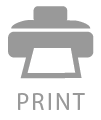 Employee incentive initiatives will exceed expectations with these creative strategies for success.
Employee incentive initiatives will exceed expectations with these creative strategies for success.
Once the exclusive domain of the sales team, incentive programs are making their way into virtually every nook and cranny of the corporate structure. However, a successful incentive program isn’t just about winning that trip to Hawaii for selling the highest number of widgets, but part of a broader view of what spells success and contributes to the bottom line of a corporation. Building morale, encouraging new ideas, retaining good people and rewarding model behaviors—these are just a few of the ways incentives are being used to maintain and build the strength of a corporation and the trend is growing.
“The non-sales employee is finally becoming a strong focus of attention,” says Jennifer Rosenzweig, global employee practice leader for Minneapolis-based Carlson Marketing. “The economy is becoming more robust, causing executives to take more notice of what is happening in their business, and the opportunities are more plentiful. Corporations are realizing how important all employees are to raising the level of their game. They see that treating their employees well is part of maintaining a productive business. Within that world is a place for the creative use of incentives.”
The types of employee recognition and incentive programs within the non-sales realm vary. Some of the most popular programs include rewarding leadership, innovation and the willingness of the employee to tackle extra training, as well as rewarding good attendance, length of service, quality of customer service, and safety within the workplace. One of the newest uses of incentives is to promote employee wellness. By rewarding employees who exercise or take preventative measures regarding their health, corporations create a positive culture and may be able to reduce a portion of insurance costs as employees make healthy lifestyle changes.
The common purpose of all types of incentive programs is what Michelle M. Smith, CPIM, calls aligning the lunch room with the board room. “It is about getting everyone in the company on the same page and focusing on exactly what they can do to help the company reach their goals,” says Smith, who is vice president of business development for Salt Lake City-based O.C. Tanner. And while this may sound like a no-brainer, getting an entire company on board can prove a challenge—and that’s where incentives can work to a corporation’s advantage.
Planning for Success
Throwing products and trips at challenges in the workplace is not the definition of an incentive program. To find success, companies must take the time to plan a logical and simple method of rewarding behaviors that work toward achieving a well-defined goal.
Define the Goal
“You have to get specific,” says Smith, “asking, ‘why are we running this program and what are we trying to accomplish?’” The basic goal could be anything from improving morale to increasing productivity or cutting operating costs. But for a program to work, planners must drill down further, defining exactly what success will look like. For example, if the goal is to improve productivity, the program should clearly state by how much productivity should increase, in what time frame, and the specific steps each participant will take to improve their performance. By strictly delineating the parameters of the program, it becomes much easier for participants to identify success and for program administrators to benchmark progress.
Know the Participants
Once program operators understand the goal, the next step is to understand the participants. The key, says Smith, is for management to do their homework, asking questions that will home in on who the audience is, how they work, and what motivates them. Are these employees team-oriented or are they analytical types who like to work alone? What is their knowledge and skill level? And how hard will it be to get buy-in about the value of the goal as it is defined by the program and what they will be asked to do?
“The answers to these questions drive decision-making about many aspects of how the program should be designed,” says Smith. They will help program designers to know whether the program should incorporate a team award or individual awards, the choice of award, whether there should be a theme, and how to communicate the program. This is all important because you can’t truly change behavior in people if you don’t understand them.
Reality Check
With the company goal in one hand and knowledge of the participants in the other, it’s time for program designers to stop and take stock. Do program participants have the tools and skills necessary to achieve the desired goals? Are there market conditions that would make the initial goal unreachable—even with great efforts on the part of employees? Will managers roll out the program to their reports and push participation? These are all areas that program designers must assess very clearly before launching a program. If areas such as training, equipment or lack of direct management buy-in present challenges, they must be addressed first.
Communication is Key
Everyone knows it, but it can’t be stated too many times—communication is the glue that holds incentive programs together. Smith advises program planners to identify the types of communication media the target audience prefers. If space is tight in a cubicle, don’t give a participant a fold-out poster—instead, keep communications to a single page or booklet and follow up in the form of e-mail reminders. Conversely, if employees don’t work at a computer station on a regular basis, e-mail isn’t going to be very effective. But one thing is for sure—when it comes to communication, the more the better, according to Smith. “Use everything at your disposal that is applicable: e-mail, posters, brochures, the company newsletter,” she says. “It is important to create an ongoing communication that keeps the program top-of-mind because people get busy day to day. You have to work at it; human nature is working against you.”
Picking the Right Carrot
When determining exactly what award to offer, the more personal and relevant to the individual the better. Clearly no reward is going to work for every person, so it is imperative to make sure the awards are compelling to that specific audience. “Know as much as you can about the employees,” says Carlson’s Rosenzweig. “Know about what motivates them and is important to them, so you can really choose something that speaks to their heart.” O.C. Tanner’s Smith keeps two other ideas in mind.
“What our research unequivocally demonstrates is that non-cash incentives — merchandise and travel — really provide the best reward. There is trophy value and it anchors the memory of their success every time they use the item,” she says. In addition, she notes that program planners should steer clear of loading the programs with items they want for themselves. “Be sure you don’t approach it with any preconceived notions; with ‘I really love this and want it in the program.’ What the deciding manager loves may not resonant at all with the group.” Keeping that attitude in mind has proven successful for Mark Servodidio, executive vice president of human resources for Avis-Budget Group and an O.C. Tanner client. Being open to the ideas of his team has helped the company introduce exciting new awards to the menu, which they refresh every 18 months. A recent addition to the product mix proved especially popular. “It happens that I have a lot of women working on my team and they wanted to include a spa certificate. It never crossed my mind, but it is a big hit,” he says. “That is why you don’t want the rewards to be something only the executives pick out, but instead the folks who are going to be working directly with the program and receiving the awards.”
Strategic Structure
After all this planning and preparation, a successful awards program boils down to one simple idea: If the workforce can’t understand it, they won’t use it, making the program dead in the water before it is even launched. Fancy and intricate won’t do, according to Cheryl Hutchinson, director of field human resources for Wilbraham, Massachusetts based Friendly’s Ice Cream Corporation. “Make sure the program is simple and useable,” she advises. “You don’t want to have a lot of rules, because if there is a lot of red tape, the program never gets used.”
To that end, Hutchinson has three basic rules that guide Friendly’s employee recognition program: The recognition has to be immediate, it must be publicly noted, and it has to be specific. “Immediate means that when the employee does something great on Friday, I as the manager don’t wait until Monday to tell them. If they do something spectacular, I stop what I am doing and reward the person now,” says Hutchinson, adding that publicly noted means the manager doesn’t just pass by saying “good job” under their breath. “We want everyone to see it, so the manager stops and asks employees to gather around.”
The last rule, is that an award must be specific, encouraging a particular behavior that hopefully will be repeated. “If the manager just says ‘Good job,’ the employee may not know what they did to receive the praise. Instead, our manager will say something like, ‘Great job making that child feel excited about their birthday celebration. I’m going to give you 2,000 points.’”
Hutchinson finds that two things happen when she follows those simple rules. Most importantly, the recognized individual feels so good that they will continue the rewarded behavior. The secondary result is that the people working around this person see a specific behavior that recognized, and they get on board. “It is contagious,” says Hutchinson. “They want to perform so they can be the next person to get points.”
A Solid Anchor
Although it is easy to look to a recognition or incentive program as a “magic pill,” to be truly effective the effort must be part of a larger picture and part of broader plan for the future. And with any kind of employee recognition program, a company should collect valuable data along the way, which will prove to be an excellent resource when planning even more effective program the next time around. Smith firmly believes that gathering information about the process is vital for long – term success. “If you set your goal and look at who is achieving awards, it tells you a story. The majority may not be a surprise to you, but I guarantee there will be some creative interpretations of getting to the goal that you never thought of,” she says. “It is also a great way to lobby for additional budget to do more recognition, and it’s the best way to communicate the benefits of such programs to senior management.”
At the end of the program, compare the actual results with the expectations and review some of the factors that influenced the effects. “This is the data you are going to use to help evolve the program,” says Smith. “It breaks my heart to see so many companies run programs and never stop to analyze. They get caught in a vicious cycle— never assessing their mistakes or building on their successes. Taking the time and the effort will benefit them 10-fold going forward.”
Servididio, of Avis-Budget Group, offers even more fundamental advice. “A recognition program really needs to be anchored to something of substance in the company culture,” he says. Because the Avis-Budget Group program is grounded in company values like respect for the individual, community responsibility, and teamwork, Servodidio is able to key every project (big or small) where someone has demonstrated behaviors into to those values. “If the company doesn’t have something like that culture as an anchor, you really have to be careful about implementing a recognition program, because it can fall apart,” he says. “We may refresh how we communicate our values, using contemporary language, but I don’t see a value like respect for the individual every going away.

